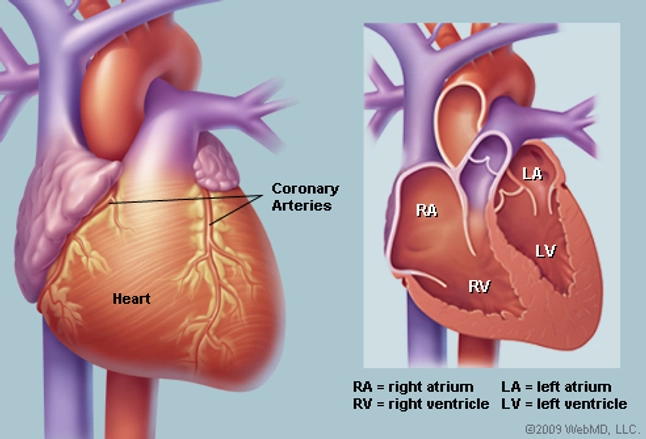Heart Disease Is Reversible: Top 5 Tips to Reverse Heart Disease

Heart disease is one of the leading causes of death worldwide. It is a condition where the heart's ability to pump blood is compromised due to the buildup of plaque in the arteries that supply the heart with blood. This can lead to serious complications, including heart attack, stroke, and heart failure. However, the good news is that heart disease is reversible.
A healthy lifestyle is key to reversing heart disease. A healthy diet, regular exercise, and stress management are all essential components of a heart-healthy lifestyle. Here are some tips on how to incorporate these changes into your life and reverse heart disease:
Top 5 Tips to Reverse Heart Disease
A healthy diet is the cornerstone of a heart-healthy lifestyle. Eating a diet rich in fruits, vegetables, whole grains, lean protein, and healthy fats can help reduce the risk of heart disease. Avoid foods that are high in saturated and trans fats, as well as processed and packaged foods that are high in sodium and sugar.
Regular exercise is another important component of a heart-healthy lifestyle. Exercise can help improve cardiovascular health by strengthening the heart muscle, reducing blood pressure, and improving circulation. Aim for at least 30 minutes of moderate-intensity exercise most days of the week. This can include activities like brisk walking, cycling, swimming, or jogging.
Chronic stress can have a negative impact on cardiovascular health. Finding healthy ways to manage stress is crucial for heart health. This can include practicing relaxation techniques like meditation, spending time in nature, or engaging in hobbies that bring you joy.
Smoking is a major risk factor for heart disease. If you smoke, quitting is the single most important thing you can do for your heart health. Your healthcare provider can help you develop a plan to quit smoking.
Being overweight or obese is a risk factor for heart disease. Maintaining a healthy weight is important for heart health. This can be achieved through a combination of healthy eating and regular exercise.
Additional Tips on How To Reverse Heart Diseases
It’s never too early to start eating healthfully, but is it ever too late? Such lifestyle medicine pioneers as Nathan Pritikin, Dean Ornish, and Caldwell Esselstyn Jr. took patients with advanced heart disease and put them on the kind of plant-based diet followed by Asian and African populations who didn’t suffer from heart disease. Their hope was that a healthy enough diet would stop the disease process and keep it from progressing further.
But instead, something miraculous happened. Their patients’ heart disease started to reverse. These patients were getting better. As soon as they stopped eating an artery-clogging diet, their bodies were able to start dissolving away some of the plaque that had built up.

Let me share with you what has been called the “best-kept secret in
medicine”: Given the right conditions, the body heals itself. If you whack your shin really hard on a coffee table, it can get red, swollen, and painful. But your shin will heal naturally if you just stand back and let your body work its magic. But what if you kept whacking it in the same place three times a day—say, at breakfast, lunch, and dinner? It would never heal.
You could go to your doctor and complain that your shin hurts. “No problem,” he or she might say, whipping out a pad to write you a prescription for painkillers. You’d go back home, still whacking your shin three times a day, but the pain pills would make it feel so much better. Thank heavens for modern medicine! That’s what happens when people take nitroglycerin for chest pain.
READ ALSO: What Has Happened To Our Food?
Medicine can offer tremendous relief, but it’s not doing anything to treat the underlying cause. Your body wants to regain its health if you let it. But if you keep reinjuring yourself three times a day, you interrupt the healing process.

Consider smoking and lung cancer risk: One of the most amazing things I learned in medical school was that within about fifteen years of stopping smoking, your lung cancer risk approaches that of a lifelong nonsmoker. Your lungs can clear out all that tar buildup and, eventually, it’s almost as if you never smoked at all. Your body wants to be healthy. And every night of your smoking life, as you fall asleep, that healing process is restarted until … bam!—you light up your first cigarette the next morning. Just as you can reinjure your lungs with every puff, you can reinjure your arteries with every bite. You can choose moderation and hit yourself with a smaller hammer, but why beat yourself up at all? You can choose to stop damaging yourself, get out of your own way, and let your body’s natural healing process bring you back toward health.
In conclusion, heart disease is reversible with lifestyle changes. A healthy diet, regular exercise, stress management, quitting smoking, and maintaining a healthy weight are all essential components of a heart-healthy lifestyle. If you have been diagnosed with heart disease, talk to your healthcare provider about developing a plan to reverse the condition and improve your cardiovascular health. With commitment and determination, it is possible to live a long and healthy life with a healthy heart.
READ ALSO: 3 Things That Happen When You Stop Eating Meat











.jpg)
